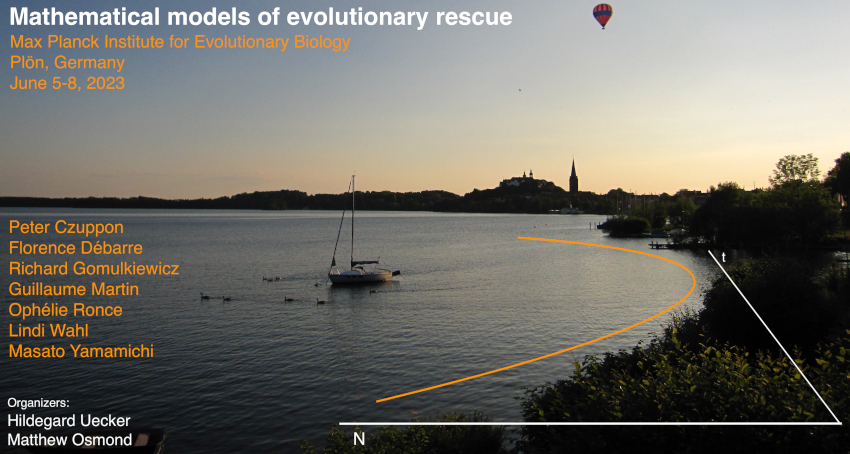If an environmental change is severe enough that local conditions are no longer within a species’ ecological persistence limits, populations must evolve in order to locally persist. Most species do not live in isolation and interactions with other species may help or hinder their ability to persist in a variety of ways. Previous studies have focused on the demographic effects of ecological...
Random mutant data suggest that the genetic basis for changes in vital rates (survival, fecundity, birth and death rates) is typically very wide: most random mutations, everywhere in the genome, have an effect on these life history traits. However, most stochastic models of ER are only manageable with a narrow basis (one resistant genotype per ER
trajectory). I will present past and present...
Models of evolutionary rescue are predominantly applied in two fields:
conservation biology, ecology and epidemiology. We are presenting two models using branching processes that cover these two fields of application.
First, we study the probability of adaptation and evolutionary rescue in a spatially structured environment. A common assumption of spatial models is that emigrating...
(work with Paulo R. A. Campos, Universidade Federal de Pernambuco, Brazil)
By defining a discrete set of available mutation vectors, the mapping from trait vector to fitness provided by Fisher's Geometric Model (FGM) has been previously extended to a mapping from genotype to fitness. We examine evolutionary rescue across this genotypic landscape. We first
provide a simple derivation of...
Most populations are heterogeneous, containing individuals in different stages that have different tolerances to environmental changes and different contributions to the evolutionary and demographic future of the population. Several theoretical studies have examined how this heterogeneity makes the probability of evolutionary rescue dependent on the life cycle in structured populations. These...
Classic studies on evolutionary rescue have considered single species dynamics, but no species exist in isolation in nature. By considering various interspecific interactions as well as coevolution, complex dynamics can emerge in evolutionary rescue. For example, rapid adaptive evolution of prey species can prevent predator extinction when there is a trade-off between defense and growth in the...

